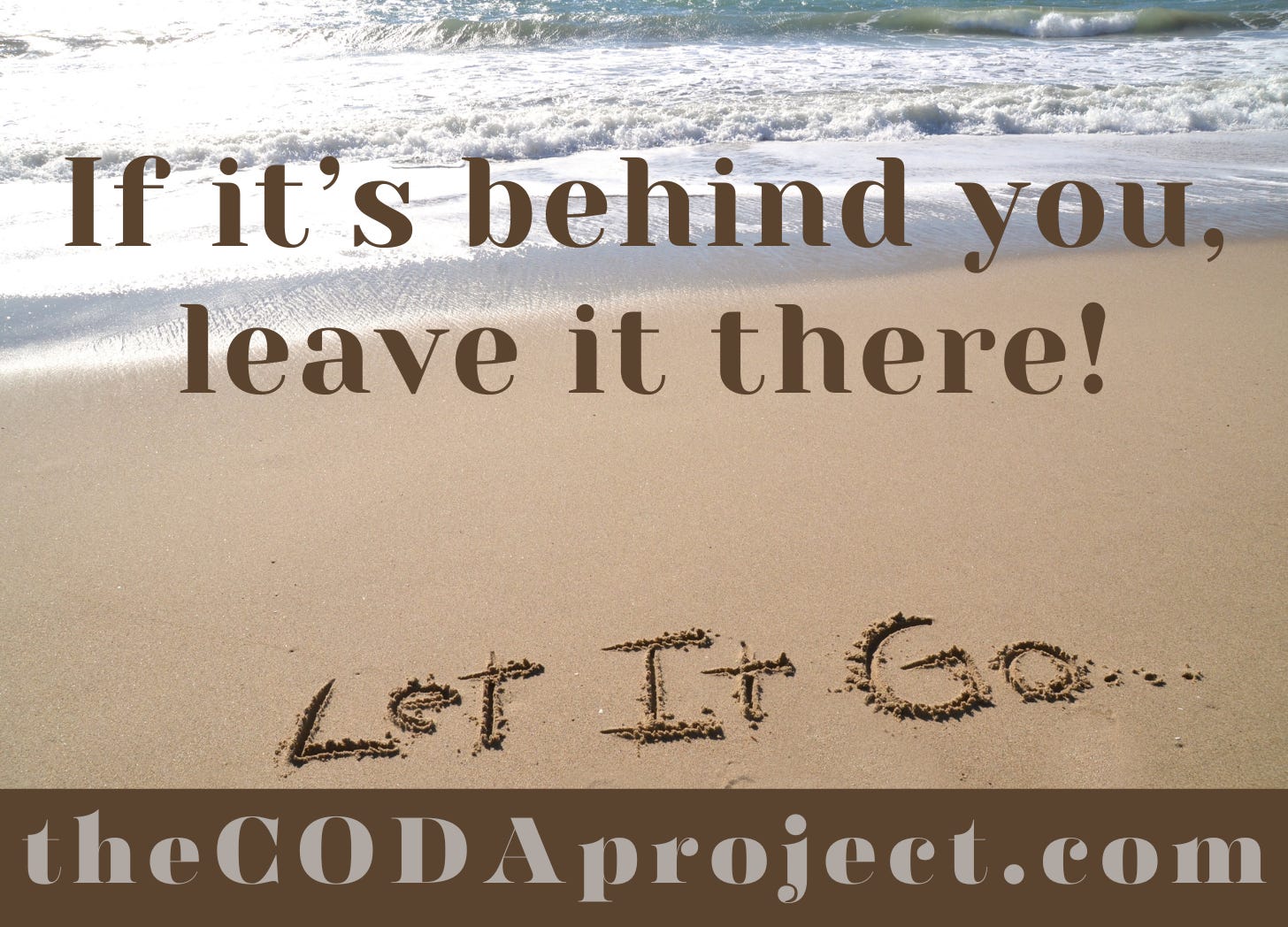Learning to Let Go
A Simple Process for Moving On
Christians often advise people to “Let go and let God,” implying that we shouldn’t worry about things but simply trust that there’s some supernatural being somewhere that is going to take care of everything for us. Well, through the CODA Project, I advise people to focus on the first half of that phrase: Let go.
However, letting go is easier said than done. It seems to be human nature to hold onto past events—especially those that are difficult or painful—and replay them over and over in our minds.
So, here’s a simple, 3-step process to help you let go of those painful things:
Step 1: Identify the Story
First, pinpoint the story that’s causing the pain. The event itself has passed—it’s over. So, what is the story you’re telling yourself that keeps the pain alive in your mind? Reflect on this narrative and acknowledge its presence in your thoughts.
Step 2: Uncover the Values Behind the Story
Next, identify what’s behind the story. What value of yours has been violated? Is it fairness, justice, freedom, or something else? It’s generally the violation of one or more values that makes the story painful. Understanding this can help you see why the story affects you so deeply.
Step 3: Choose to Let Go
Finally, make the conscious decision to let go of the story. Remember, the event has passed, so it’s gone. Now, we have to let go of the dark shadow of the painful event—the story we’re telling ourselves about the event—if we want to heal and grow. Letting go doesn’t mean forgetting or condoning what happened; it means choosing not to let it control your present and future.
Move Forward
We can’t change or undo the past, but we can choose to stop reliving painful moments. That’s what it means to “let go!” By releasing these stories, we free ourselves to move forward and embrace new experiences with a lighter heart.
If you’re a paid subscriber, please share your thoughts or experiences on letting go in the comments below. I’d love to discuss this with you!


